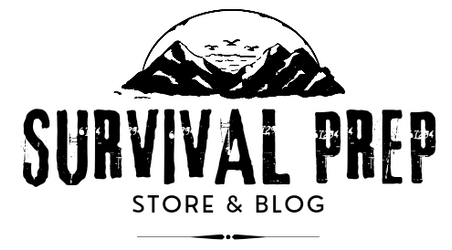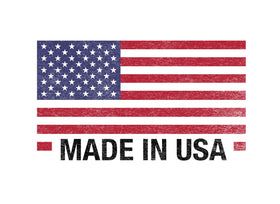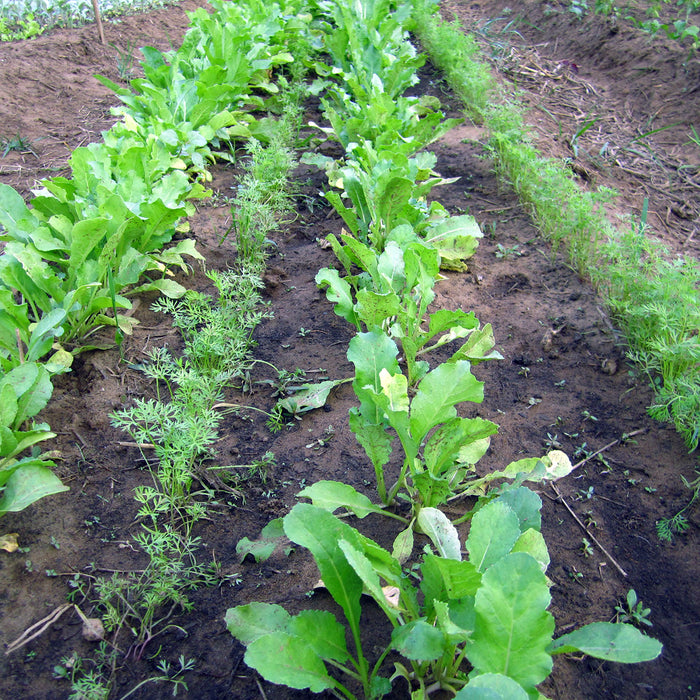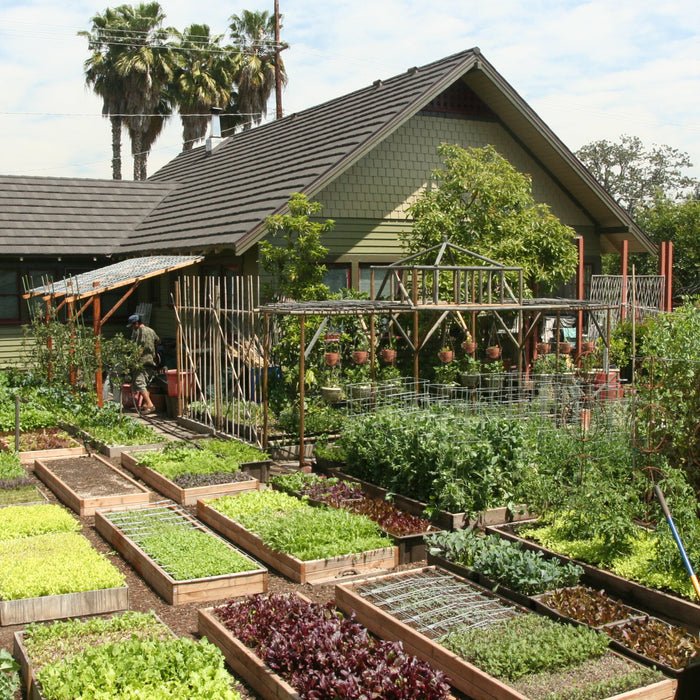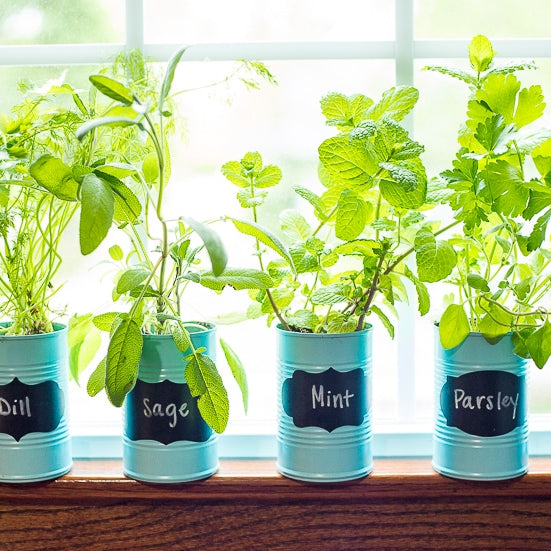

How to stockpile water: Best water storage containers, tips for preserving water long term
It's no secret that water is a crucial element to survival. But what happens when there's a natural disaster, or something else causes the water supply to be cut off? That's why it's important to stockpile water. In this blog post, we're going to discuss how to stockpile water, as well as some tips for preserving it long term. We'll also answer the question: does water ever go bad? And finally, we'll recommend some of the best containers used to store water on the market today!
Read :
Top 100 Things You Should Start Stocking Up On for When SHTF
So, let's get started!
- Stockpiling water
- Preserving water
- Water contamination
- Water expiration
- Collecting rainwater
- Best water containers
Why is it important to stockpile water?
There are a number of reasons why stockpiling water is a good idea. First of all, it's crucial for survival. In the event of a natural disaster or some other type of emergency, having a supply of water on hand can mean the difference between life and death. Even if you live in an area where the water supply is generally reliable, it's always a good idea to have some water on hand in case of an unexpected outage. Having a few gallons of water stored away is an easy way to be prepared for any emergency. Gallons of water stored away? Check. Read on.

Stockpiling water serves another purpose: it can be used for other things like bathing, cooking, and cleaning. Essentially, water is a survival tool and should be treated as such. Not only does it keep you hydrated, but it can also ensure you have the resources you need to live. And if you live in an area with hot summers, having a stash of water can help you stay cool and hydrated.
Anyone who has ever had to ration water during a power outage or natural disaster knows the importance of having a reliable water storage system at home. While most people are familiar with the standard options such as water bottles and barrels, there are actually a wide variety of ways to store water for long-term use. Here are five of the most popular methods:
1. Water backs: These are specially designed containers that can hold up to 80 gallons of water. They typically have a spigot on the bottom, making them easy to dispense.
2. IBC totes: IBC totes are large, durable containers that are commonly used to store transportation liquids like gasoline and chemicals. However, they can also be used to store potable water for long periods of time.
3. Rain barrels: rain barrels are a great way to collect and store rainwater for later use. They can be connected to gutters so that they automatically fill up when it rains.
4. Plastic drums: Plastic drums are another common option for storing large quantities of water. They are typically food-grade and can be fitted with a tap or spigot for easy dispensing.
5. Water bladders: Water bladders are large tanks that can be filled with water and then hung from a ceiling or other high place. They are often used by the military to store water in combat situations.
How much water should you stockpile?
The amount of water you need to stockpile will depend on your personal needs. A good rule of thumb is to stockpile at least one gallon of water per person, per day. But if you live in a hot climate or have small children, you may want to increase that amount. And if you have the space, it's never a bad idea to stockpile more water than you think you'll need.
If you've ever been stuck in a long line at the grocery store, you know that people can get pretty panicked when they think they're going to run out of water. In fact, a good rule of thumb is to stockpile at least one gallon of water per person, per day. That may sound like a lot, but it's actually not as much as you think. A gallon of water weighs eight pounds, so if you have a family of four, you're looking at stocking up on 32 pounds of water. Of course, if you live in an area with frequent power outages, you'll want to increase your supply. The same goes for if you live in a hot climate or if you have young children or pets. But even if you don't think you need all that water, it's always better to be safe than sorry. So go ahead and stock up - your future self will thank you.
At what temperature does plastic leech into water?
We've all been there. You're out for a nice, leisurely hike on a hot day, and you stop to take a drink from your water bottle. But as you raise the bottle to your lips, you notice something strange...the water tastes like plastic. You've just experienced the phenomenon of leeching, and it's not nearly as fun as it sounds. So what exactly is leeching, and how can you avoid it?
Leaching occurs when chemicals from plastic are released into food or water. This usually happens when the food or beverage is stored in a container made of plastic that contains BPA's and is exposed to high temperatures. The chemicals that are leached into the food or drink can cause a variety of health problems, including gastrointestinal issues and endocrine disruption. So if you're looking to avoid a case of leaching, it's best to avoid storing your food or beverages in BPA Free plastic containers, especially if they're going to be exposed to high temperatures.
Is it safe to store water in plastic bottles?
If you're like most people, you probably have a few plastic water bottles kicking around your house. And while they're great for a quick drink on the go, you might not want to use them for long-term water storage. As we discussed previously, plastic can leach chemicals into the water, which can be harmful to your health. BPA is one of the most well-known culprits, and it's been linked to a variety of health problems including reproductive issues, cancer, and more. So if you're looking to store water for an extended period of time, it's best to use food grade storage containers, not cheap plastic. We don't even recommend storing plastic bottles in your car for extended periods of time because of this reason.
How much water would a family of four need to survive for one week?
A family of four would need a minimum of 1 gallon of water per person per day to survive one week. However, this estimate does not take into account other factors such as cooking, cleaning, and hygiene. In reality, a family of four would likely need closer to 2 gallons of water per person per day to maintain a decent standard of living. And that's just for the bare minimum! If you want to live comfortably, you'll need even more water. So how much water would a family of four need to survive one week? The answer is: 40 gallons for one week.
What are the best ways to preserve water long term?
You can't live without water for more than a few days, which is why it's important to have a plan for long-term water storage. There are a few different ways to do this, but the most important thing is to use BPA-free containers. BPA is a chemical that can leach into water and cause health problems. Once you've got your containers sorted, you need to think about where you're going to store them. The best place is a cool, dark, and dry spot. This will help to prevent the water from going bad. Finally, you need to think about how often you're going to rotate your water supply. A good rule of thumb is to use the oldest water first and then refill the containers with fresh water.
What could compromise the water supply of the United States?
There are a number of things that could compromise the water supply of the United States. One possibility is a severe drought. If rain and snowfall levels decline significantly, it could cause water shortages across the country. Another possibility is a major leak or spill at a wastewater treatment plant. If untreated sewage were to enter the water supply, it could contaminate the water and make it unsafe to drink. A terrorist attack on a water treatment facility could also cause widespread contamination. In addition, a prolonged power outage could disrupt the operation of water treatment plants and lead to water shortages. Any of these scenarios would have serious consequences for the water supply of the United States.
If history is bound to repeat itself, buckle down because our water supply has a rocky past. There have been several instances in which the water supply of the United States has been compromised. In 1993, for example, a chemical spill in Colorado contaminated the water supply of more than 18 million people. In 1999, a series of storms caused widespread flooding in North Carolina, resulting in the contamination of drinking water for more than 2 million people. These are just two examples of how easily our water supply can be disrupted. While there are laws and regulations in place to protect our water supply, it is still vulnerable to human error, natural disasters, and especially intentional attacks. As a result, we must always be vigilant in order to ensure that our water is safe to drink.
How do you store water long term using bleach?
First, find yourself a water storage container with a tight-fitting lid. Rinse it out thoroughly with soap and water and then calculate how much chlorine bleach you will add. EPA.gov recommends adding a 1/8 teaspoon (8 drops or 0.4 milliliters) of unscented liquid chlorine bleach to each gallon (3.8 liters) of water you plan to store. Next, stir well and immediately seal the container. You'll want to label your water containers with the name and address of the water source, treatment date, and expiration date (six months from the treatment date). You should know that water that has been treated this way can be used for drinking, cooking, and cleaning. If water is cloudy after treatment, let it stand for 30 minutes to allow particles to settle, then decant (pour off) water into another clean container.
Remember that bleach will not disinfect water that has been previously polluted with chemical pollutants such as gasoline, oil, or pesticides. Nor will it make salty water safe to drink. For more information on storing water long-term using bleach, please contact your local water utility or the EPA's Office of Ground Water and Drinking Water.
Water Purification Tablets
Another popular method to store water long-term is water purification tablets. These tablets will kill any bacteria or viruses in the water and make it safe to drink. The downside of this method is that it can make the water taste a bit off. If you go this route, be sure to follow the instructions on the packaging carefully including oxygenating the water if directed.
Does water ever expire?
You might be surprised to learn that water doesn't actually have an expiration date. However, that doesn't mean that it's indestructible. Just like anything else, water can go bad. Over time, it can become contaminated with bacteria or other pollutants. It can also absorb impurities from its container. As a result, water that has been sitting around for too long might not be safe to drink. That's why it's important to check the quality of your water frequently and to replace it if it starts to taste funny. So, while water might not technically expire, it's still a good idea to keep an eye on it.

Do water storage containers ever go bad?
Just like any other type of container, water storage containers can eventually start to break down and leach chemicals into the water. This is why it's important to inspect your containers regularly and replace them as needed. You should also clean your containers with a mild bleach solution (one tablespoon of bleach per gallon of water) every six months to prevent the build-up of bacteria.
Collecting Rainwater
If you're looking for a way to save water, why not collect rainwater? It's a free resource, and it's great for the environment. Plus, it can really help out during a drought. All you need is a rain barrel or water tank near your downspout. The size of the barrel or tank will depend on how much water you want to collect. A 55-gallon (208.20 liter) rain barrel is a good starting point for most people. Once you have your rain barrel or water tank set up, simply attach a hose to the spout and direct it into your storage container. It's that easy! So why not give it a try? You might be surprised at how much water you can save.
Is it illegal to collect rainwater?
It's a question that has been asked for centuries: is it illegal to collect rainwater? The answer, of course, depends on who you ask. In some parts of the world, rainwater harvesting is a traditional practice that is still used today. In others, it is viewed as a modern necessity, particularly in areas where water resources are strained. And then there are those who believe that any use of rainwater constitutes theft and that any individual who collects rainwater should be prosecuted to the fullest extent of the law. The truth, as always, lies somewhere in the middle. While there are no federal laws in the United States that specifically prohibit the collection of rainwater, some states have enacted their own regulations. As a result, it is important to research the laws in your area before you start harvesting rainwater. With that said, collecting rainwater is a perfectly legal way to save money and help the environment.
So what are the best water storage containers in 2022?
If you're one of those people who is always prepared for the worst, then you know the importance of having a good water storage container. After all, you never know when you'll need it. Whether it's for an emergency or just for camping, a good water storage container can be a lifesaver. So what are the best water storage containers in 2022? Here are a few of our favorites.
Stackable BPA Free 14 Gallon Water Storage Containers
For starters, we love the fact that these containers are BPA free. That means they won't leach harmful chemicals into your water supply. They're also stackable, so you can save space when you're storing them. And if you're worried about them leaking, don't be. They have a special double-sealed design that prevents leaks.
BPA Free 50 Gallon Water Storage Container
This BPA Free 50 Gallon Water Storage Container is made of food-grade plastic that is completely free of bisphenol A, a known carcinogen. This container is perfect for storing drinking water, rainwater, or even emergency supplies. Its durable construction will withstand years of use, and its large capacity will ensure that you never run out of water. So don't wait until disaster strikes to get a water storage container. Be prepared and buy a BPA Free 50 Gallon Water Storage Container today!

Some other goodies to have on hand: Katadyn Pocket Microfilter, and the Seychelle Self Filtering Water Bottle.
For the serious prepper, the Katadyn Pocket Microfilter is a must-have. This small, lightweight filter can be easily carried in a backpack or stored in a bug-out bag, and it's ideal for filtering water in an emergency situation. The microfilter removes 99.9999% of bacteria and 99.9% of protozoa, making it an essential piece of equipment for any prepper who wants to be prepared for anything. The Seychelle Self Filtering Water Bottle is also a great option for those who want to be able to filter water on the go.
Seychelle Water Self Filtering Water Bottle
The Seychelle Self Filtering Water Bottle is also a great option for those who want to be able to filter water on the go. Looking for a way to stay hydrated on the go? Check out the Seychelle water filter bottle. This handy dandy bottle allows you to fill up with water from almost any source, including lakes, streams, and even puddles, and then filters out all the nasties, like bacteria and Giardia. That means you can drink safe, clean water wherever you are, without having to lug around a bunch of heavy water bottles. The Seychelle water filter bottle is perfect for hikes, camping trips, or even just when you're on the go and want to make sure you have access to clean water. So don't get caught dehydrated without one!
So what's the best way to prepare for a possible water shortage? The answer is simple: start storing water now. By taking this proactive step you can ensure that you and your family will have access to clean, safe water in the event of an emergency.
By taking some simple steps now, you can make sure that you and your loved ones will always have access to clean water - no matter what. Have you started stockpiling water yet? What other tips do you have for keeping prepared for emergencies? Let us know in the comments below.
Recommended Posts
- How to Build a Bug Out Bag for Kids: Tips and Tricks
- 10 Survival Skills Every Kid Should Know
- Food prices are about to skyrocket even more; Prepare for a 'famine,' followed by housing crash, then equities wipeout - Michael Gayed
- South Threatened by Severe Weather After Texas Tornado Disaster: How to Prepare.
- The Ultimate Guide to Radiation Water Filters: How They Work
